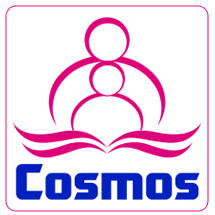Lower Limb Exo-Skeleton for Rehabilitation
Keywords:
Lower Limb Exoskeleton / Prosthesis, Non-Invasive Electromyography, Intention Recognition, Support Vector MachineAbstract
Above-knee amputation remains a significant global issue, leaving many people physically disabled due to various natural and man-made causes, such as diseases, wars, and disasters. This article presents a novel, non-invasive active prosthesis based on electromyography (EMG). The proposed method offers a major advancement by achieving higher classification accuracy with minimal hardware requirements. Using EMG input signals, the active prosthesis controls three body postures: Sit, Stand, and Walk. These EMG signals are classified through two machine learning models: Support Vector Machine (SVM) and Long Short-Term Memory (LSTM) networks. Both models are evaluated based on accuracy. The results show that SVM outperforms LSTM, achieving a classification accuracy of 82%, while LSTM reaches 63%.
References
Ziegler-Graham, E. J. MacKenzie, P. L. Ephraim, T. G. Travison, and R. Brookmeyer, Estimating the Prevalence of Limb Loss in the United States: 2005 to 2050,” Archives of Physical Medicine and Rehabilitation, vol. 89, no. 3, pp. 422–429, Mar. 2008, doi: 10.1016/j.apmr.2007.11.005
Ahkami et al., “Electromyography-Based Control of Lower Limb Prostheses: A Systematic Review,” IEEE Transactions on Medical Robotics and Bionics, vol. 5, no. 3, pp. 547–562, Aug. 2023, doi: 10.1109/tmrb.2023.3282325
J. Hargrove et al., “Robotic Leg Control with EMG Decoding in an Amputee with Nerve Transfers,” New England Journal of Medicine, vol. 369, no. 13, pp. 1237–1242, Sep. 2013, doi: 10.1056/nejmoa1300126.
Liu, Z. Chen, and Y. Hu, “Lower Limb Motion Recognition by Integrating Multi-modal Features Based on Machine Learning Method,” Proceedings of the 4th International Conference on Computer Science and Application Engineering, Oct. 2020, doi: 10.1145/3424978.3425120.
K. Wu, G. Waycaster, and X. Shen, “Electromyography-based control of active above-knee prostheses,” Control Engineering Practice, vol. 19, no. 8, pp. 875–882, Aug. 2011, doi: 10.1016/j.conengprac.2011.04.017.
Peeraer, B. Aeyels, and G. Van Der Perre, “Development of EMG-based mode and intent recognition algorithms for a computer-controlled above-knee prosthesis,” Journal of Biomedical Engineering, vol. 12, no. 3, pp. 178–182, May 1990, doi: 10.1016/0141-5425
Shah, A. Khan, H. Zahid, and A. Shan, “Design and Development of Human Knee Joint Muscle(s) Classification System using Machine Learning Technique,” ResearchGate, Oct.2020,[Online].Available:https://www.researchgate.net/publication/348550210_Design_and_Development_of_Human_Knee_Joint_Muscles_Classification_System_using_Machine_Learning_Technique/citations.
Liu, H. An, H. Ma, and Q. Wei, “Novel Feature Extraction and Locomotion Mode Classification Using Intelligent Lower-Limb Prosthesis,” Machines, vol. 11, no. 2, p. 235, Feb. 2023, doi: 10.3390/machines11020235.
S. Dhindsa, R. Agarwal, and H. S. Ryait, “Performance evaluation of various classifiers for predicting knee angle from electromyography signals,” Expert Systems, vol. 36, no. 3, Feb. 2019, doi: 10.1111/exsy.12381.
T. Hussain et al., “Intent based recognition of walking and ramp activities for amputee using sEMG based lower limb prostheses,” Biocybernetics and Biomedical Engineering, vol. 40, no. 3, pp. 1110–1123, Jul. 2020, doi: 10.1016/j.bbe.2020.05.010.
Babu, R. D., Adithya, S. S., & Dhanalakshmi, M. (2024). Design and development of an EMG controlled transfemoral prosthesis. Measurement Sensors, 101399. https://doi.org/10.1016/j.measen.2024.101399.
Roessingh Research & Development-MyLeg database for activity prediction,” University of Twente, Faculty of Electrical Engineering, Mathematics and Computer Science, Biomedical Signals and Systems, Netherlands, May 2023. Accessed: May 23, 2023. [Online]. Available: https://data.4tu.nl/datasets/01d30db7-95a8-4c39-afb9-4eb1a2f27539.

Downloads
Published
How to Cite
Issue
Section
License
Copyright (c) 2025 50sea

This work is licensed under a Creative Commons Attribution 4.0 International License.




















